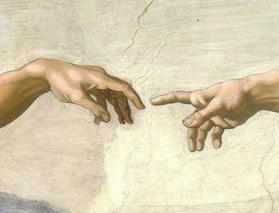Here is a very partial review/summary of a wonderfully stimulating book. I hope to go over it again sometime and add to this, but here it is in its unfinished form.
Jeremy Begbie, Theology, Music and Time (Cambridge Studies in Christian Doctrine; Cambridge: Cambridge University Press, 2000).
This is a book to savor. The basic theme is simple: Begbie, a musician and Vice Principal of Ridley Hall, Cambridge, serves up a theological meditation on time by employing categories drawn from music theory. The development of the theme is rich and rewarding.
Begbie’s book is divided into three sections. In the first two chapters, he explores some aspects of music theory, emphasizing music’s physical and temporal character and its embeddedness in multiple contexts. Part II turns to theology, applying the insights of music theory to various theological issues surrounding temporality — the nature of time, eschatology and salvation, time and eternity, and time and the Eucharist. The final chapters explore improvisation in order to arrive at a theological account of freedom and restraint. Overall, Begbie’s goal is not to provide a “theology of music” but to tease out from reflection on music “conceptual tools — ways of thinking, models, frameworks, metaphors — for exploring, clarifying, re-conceiving the dynamics of God’s world and his ways in the world” (p. 271).
Several key points emerge from the initial chapters. First, Begbie resists the idea that music is designed to lift us out of the temporality of our lives and carry us to some “other” realm. Instead, he argues that music is embedded in the physical and temporal world; music can only be produced by physical vibrations, and music takes time to hear. Music is most instructive to theology when we recognize that it involves an intense engagement with the time of our daily lives.
Second, the time of music is directional, but it is not one-dimensional. Music goes somewhere, but the way it goes somewhere cannot be graphed by a line. At least in the Western tonal tradition, music moves forward by a pattern of tensions and resolutions, but this is not a simple linear movement. Rather, music’s time consists of overlapping metrical “waves,” tensions and resolutions at many levels at once. Each measure of a waltz, for example, has three beats, whether or not any notes are played on those beats, and this forms one pattern of tension-resolution. Tones “ride” the wave of the meter, and these tones are the stuff of rhythm; over the “BUM-bum-bum” of the meter, for example, is the “La-la- la” of the melody. But a waltz does not merely move measure-by-measure; melodic themes that are several measures long may be repeated, and form a larger-scale rhythm of their own. At each level, there is a pattern of tension and resolution. Slice into a waltz at the end of the first measure, and you’d find that the first wave of the meter has come to resolution (you’ve gotten to the third beat), but that larger waves are building tension.
Third, Begbie explains, “tones will mean next to nothing apart from their dynamic interplay, and even when considered together, their meaning emerges primarily through this dynamic interaction, not because the tones, either individually or collectively, ‘point’ us to something” (p. 50). This has several implications for a musical conception of time. Each moment of a musical composition anticipates another, and the music moves forward only by the transcience of each moment. Further, musical tones are not noises within some kind of preexisting “container” of time; the temporality of music arises from the way one musical moment “receives” from preceding tones and “leans” into the following tones. A single tone is what it is because of its dynamic relation to past and future.











